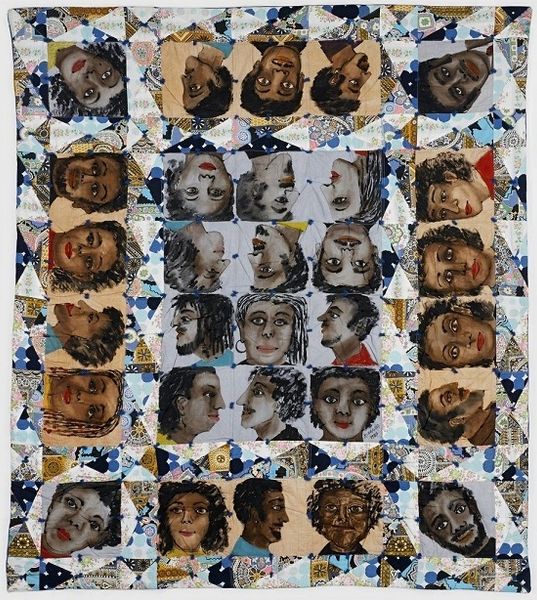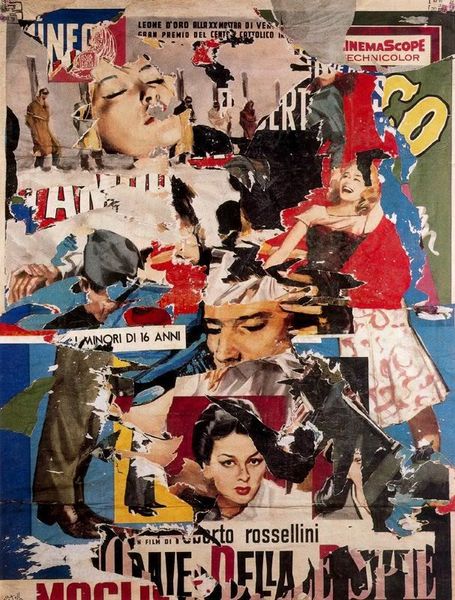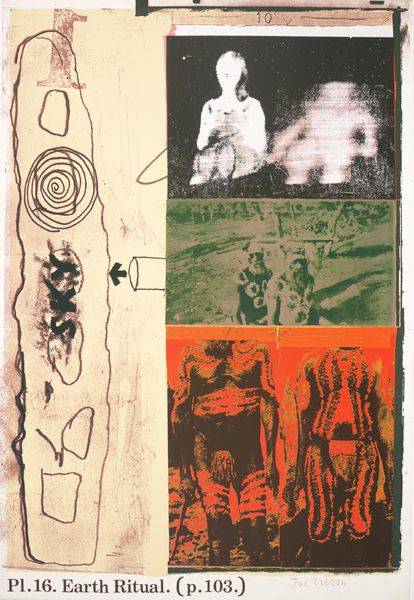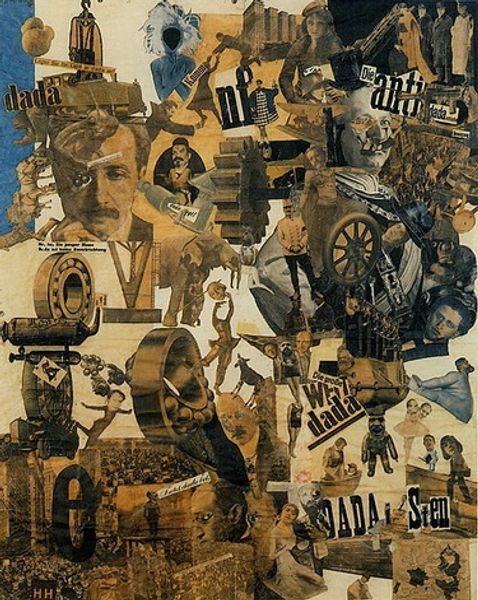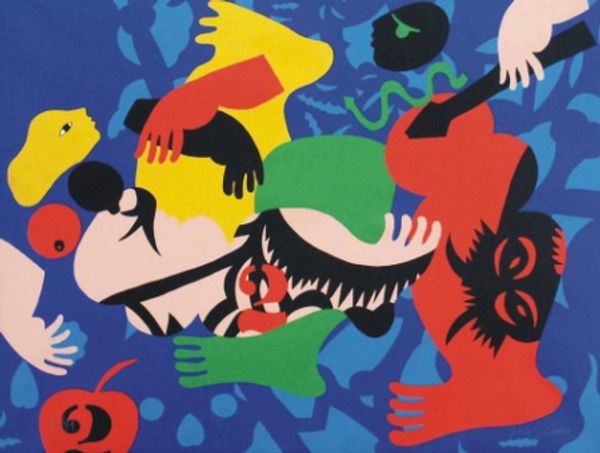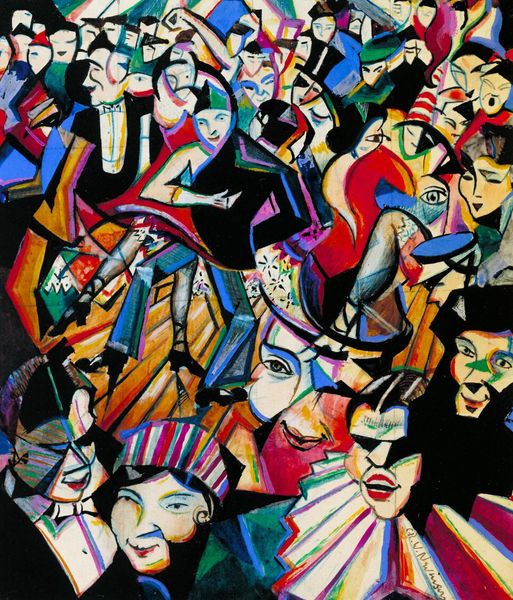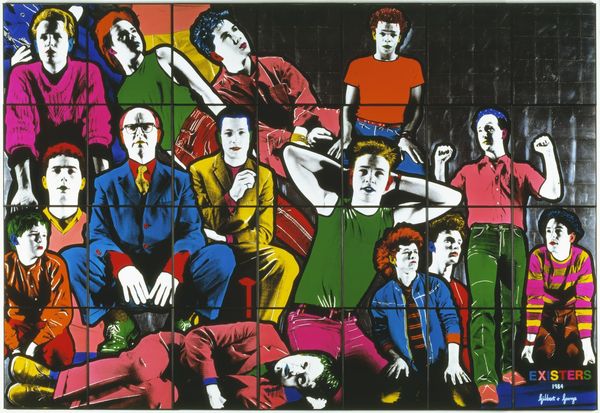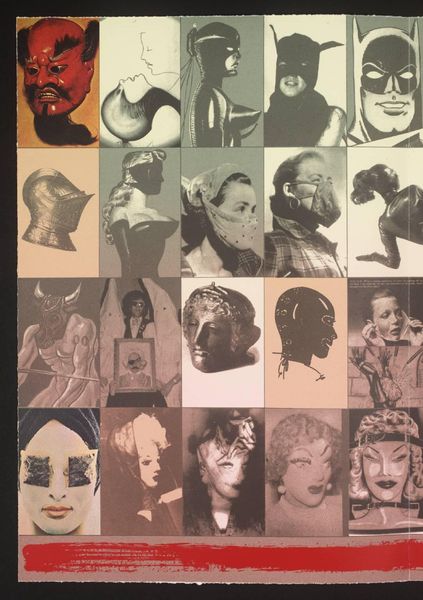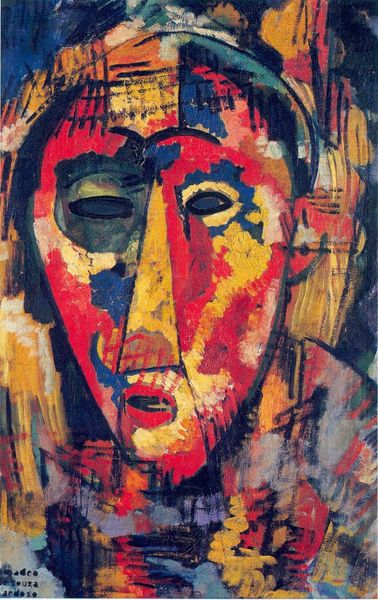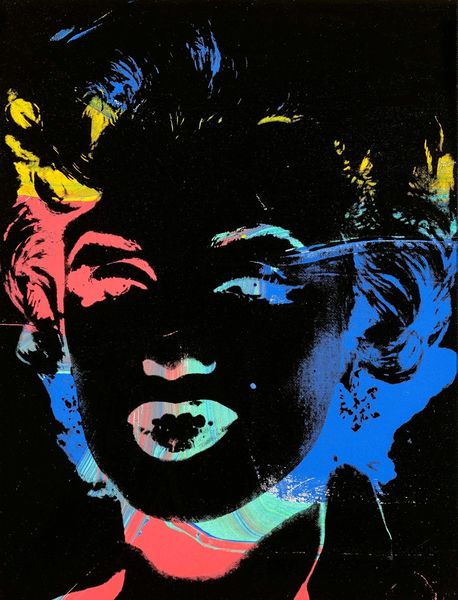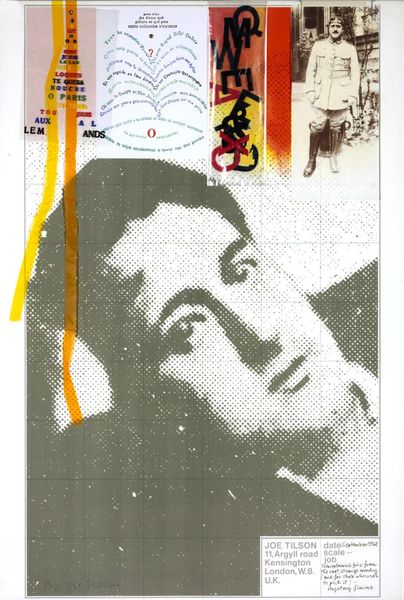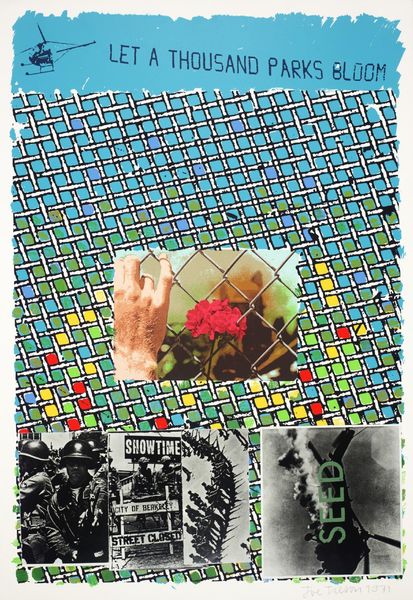
#
pattern-and-decoration
Copyright: Miriam Schapiro,Fair Use
Curator: Standing before us is Miriam Schapiro's "Russian Matrix," a mixed-media artwork from 1994 incorporating acrylic paint and collage elements. Editor: It’s immediately striking—the repetition, the grid structure. I feel this rhythmic pulse, almost a sense of…controlled chaos? The red and black frame a multitude of different faces. Curator: Indeed. Schapiro, known for her femmage style, frequently incorporates patterns and imagery rooted in domestic craft and decoration, often with a strong feminist message. "Russian Matrix" exemplifies this, celebrating a lineage of female figures. Editor: The collage technique and acrylic layering introduce varying degrees of texture. Look closely, and you’ll see no two portraits are exactly alike in execution, creating subtle discord. It disrupts the apparent order implied by the grid. The pop art style enhances the contrast. Curator: The subjects of these portraits connect the personal to a cultural inheritance. Schapiro often looked towards forgotten women in art and history. By embedding their images, often appropriated, within this matrix, she suggests their stories are intertwined and foundational. Editor: Appropriation becomes a structural principle, not just thematic. The very composition underscores the layered nature of memory and representation. What seems superficially like a grid is actually a dynamic play of depth and surface, presence and absence, as if the support acts as a stage, and we, spectators to its construction. Curator: Precisely. There is a deliberate push and pull. The patterns aren't just decorative. They echo motifs found in domestic crafts traditionally associated with women. Through the use of domestic craft techniques, she elevates them. Editor: I noticed too, how each woman gazes in a different direction. Some appear assertive, directly meeting our eyes; others are averted, creating internal dialogue. They occupy a liminal zone. A bold example of mixed-media exploration. Curator: Schapiro consistently questioned patriarchal art historical narratives, weaving alternative genealogies. I find it powerful, speaking to continuity and legacy. It challenges our understanding of women's place. Editor: Yes, viewing it from a purely formal standpoint reveals a meticulously organized chaos, where each portrait and frame serves a critical function within the larger, unifying whole. It offers space for reinterpretation, again and again.
Comments
No comments
Be the first to comment and join the conversation on the ultimate creative platform.
